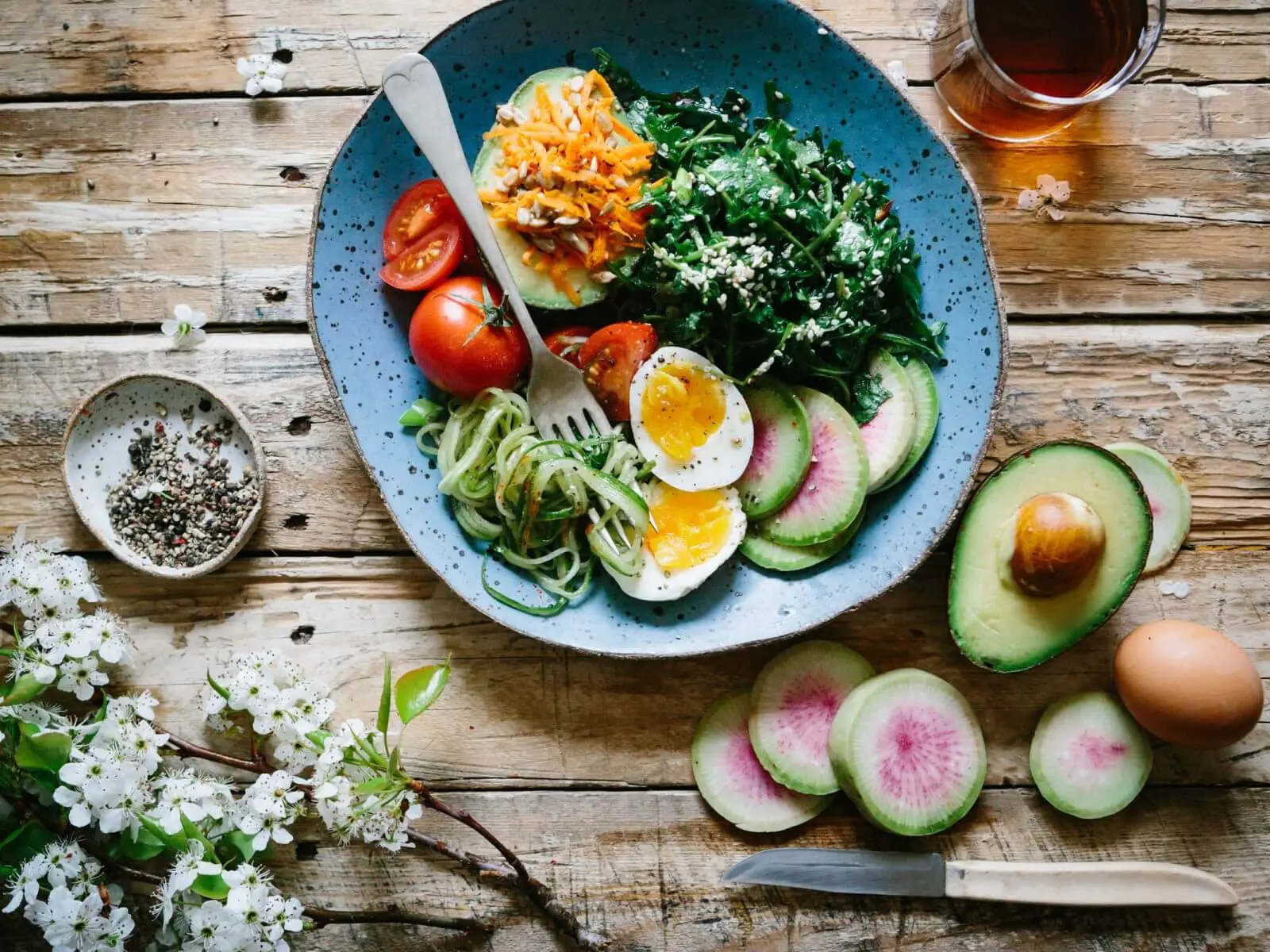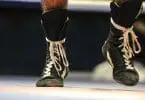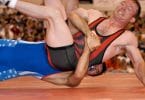Whether you’re one of those wrestlers who can eat almost anything without seeing significant gains or losses in performance or you have to watch every calorie that you consume to manage your weight, diet is one of the most important factors for you to consider as an athlete. Food is the fuel to the machine of your body, and has the capacity to greatly improve or hinder your performance. Our diet guide for wrestlers gives you the knowledge you need to eat right to maximize your performance this season.

One of the biggest mistakes that wrestlers make is that they spend all of their time training, lifting, and buying new wrestling shoes, but they all but completely neglect their diets. For those of you who are guilty of this, you should be paying extra attention to this article. Today, we’re going to take some time out to discuss your diet and emphasize just how vital it is to your continued performance and improvement as an athlete.
Wrestling Weight Classes
When most people hear talk of diets in relation to combat sports, the first thought that they jump to is “weight classes.” While this is nowhere near the full scope, it’s still a good place to start the our diet guide for wrestlers.
When you’re looking at scholastic wrestling, most states in the USA have fourteen different weight classes which range from 106 pounds all the way up to 285 pounds. Depending on your particular school or state regulations, there may also be a few other requirements.
In combat sports, your goal should always be to be the heaviest individual in your weight class. If you’re at the lower end of a bigger weight class, then you’re best bet is to lose the extra weight and try to slip into a lower weight class. While size isn’t everything in a wrestling match, it certainly gives you a good advantage providing you have the technical skills.
Before your weigh-in, you need to know exactly which weight class that you want to be in, and have a plan of action to gain or lose the weight necessary to pass the weigh-in. While exercise will definitely play a good part, your diet will decide whether or not you reach your goals.
The Importance of Diet for Wrestlers
Aside from making it into your ideal weight class, your diet has a huge effect on your athletic performance. The food and drinks that you consume will dictate how fast you are, you’re energy levels, endurance, muscle growth and recovery, and your overall mood.
No two bodies are the same, and what works for another person may not be the best diet for yourself. It’s important to experiment with your macronutrients, feeding times, and meal sizes to find out what has the greatest effect.
Cutting or Gaining Weight
Abs are made in the kitchen.
This is an old saying among bodybuilders, but it’s applicable to wrestling as well. You can workout and exercise all that you want, but without the proper diet, you won’t be getting any closer to your goals.
In general, gaining weight is always easier than losing it. In addition to your regular strength and power training routine, you’ll need to increase your calorie intake with foods high in protein in and fats.
To lose weight, you’ll want to cut your calorie intake by 300-500 calories less than your daily requirements (which can be figured out with a simple online calculator). One pound of fat is equivalent to 3,600 calories. With a 500-calorie deficit every day, you’ll lose approximately one pound of fat per week.
Muscular Growth and Recovery
This is the part where we talk about protein. If you want to pack on muscle and quickly recover from your workouts, you’ll need to consume at least 1 gram of protein for every pound of bodyweight. If you weigh 190 pounds, and you’re trying to get up to 200 pounds, then you’ll want to consume 200 grams of protein per day.
At first this may seem like a lot, but it can easily be achieved if you eat high-protein foods such as:
- Chicken breat
- Steak and beef
- Eggs
- Fish
- Also, whey protein shakes
For example, one chicken breast has 43 grams of protein in it. If you eat a couple of small breasts with each meal, you’ll easily get your 200 grams of protein in.
Energy Levels
Your diet has a huge effect on your energy levels, but this is where you’ll experience the most differentiation between individuals. Some claim that a diet high in carbs and protein with a low fat intake gives them the most energy. Others stand by a low-carb, high-protein diet. You’ll need to spend a few days trying out different macronutrient ratios to find what works best for you.
Managing Your Macronutrients
To beginners, macronutrient management can seem complicated and confusing. However, once you get the hang of it, you’ll find that it’s relatively straightforward. Once you figure out your ratio, you just need to start keeping a journal of what you eat every day with a pen and pad or a handy phone app.
Carbs
Carbs are the easiest macronutrient for your body to digest, and are the quickest source of energy. Most foods aside from meat and vegetables have at least some carbohydrates in them, but high-carb foods include:
- Bread
- Rice
- Sugar
- Beans
- Also, any food made with flour
Protein
After carbs, proteins are the second-easiest for your body to digest and directly fuel your muscle growth and recovery. As we just mentioned, your protein intake is arguably the most important macronutrient. It is mainly found in meats, nuts, soy, whey, and beans.
Fats
Fats are the hardest to digest, which makes them great for keeping you full between meals. Your fat intake also has an effect on your testosterone levels which affect your energy and muscle growth. You should stay away from trans fats (found in most cooking oils). Mono and polyunsaturated fats found in nuts, meat, olive oil, or butter are very healthy to consume in small amounts.
Recommended Foods to Eat
This table shows the certain foods you should try eating when you’re getting ready for your next wrestling match.
Food | Reason |
|---|---|
Lean Meats | Beef sirloin, pork tenderloin, chicken breast, and other deli meats such as ham, beef, and turkey will provide rich sources to your diet, and iron to name a few. You can’t go wrong with plain or raw steamed vegetables. |
Seeds and Nuts | Rich in healthy fats, fiber, Vitamin E, these portion-controlled snacks will keep your body filled for hours. |
Fish (broiled/baked or canned) | Salmon, halibut, and tuna have Omega-3s, which can reduce inflammation in your body after an extensive workout. We suggest that you eat fish 3 times a week as a lean protein source and a healthy heart. |
Eggs | Eggs are rich in Vitamin D, choline, and protein which can be consumed during breakfast or as a snack. You can scramble it in the microwave for a minute and add a slice of cheese and an English muffin to make your own breakfast sandwich. |
Vegetables | Leafy greens and brightly colored vegetables have low calories and are rich in Vitamin C, A, potassium, folic acid, and iron just to name a few. You can’t go wrong with plain or raw steamed veggies in your diet! |
Final Tips on our Diet Guide for Wrestlers
After you get your diet under control, you’ll immediately see the improvements that you’ve been searching for. Your energy levels will be higher, you’ll pack on more muscle, shred your fat, and develop endurance for high-intensity wrestling.
Of course, no wrestler is complete without proper tools. Once you combine proper diet with technical skills and some good wrestling gear, you’ll be unstoppable.








Leave a Comment